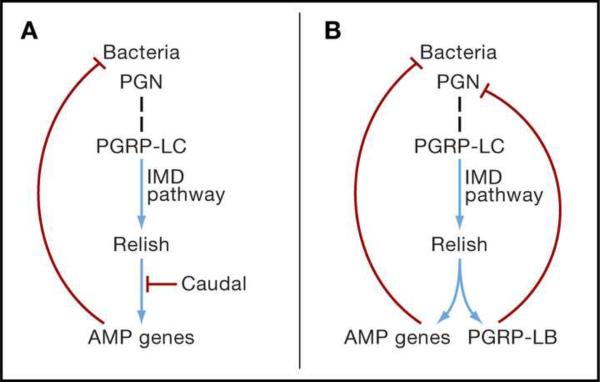Figure 1.
The Insect IMD Pathway and Persistence of Resident Microorganisms. The IMD (Immune Deficiency) pathway is triggered by binding of bacterial peptidoglycan (PGN) to the peptidoglycan recognition protein PGRP-LC (dashed vertical line). The resultant activation of the NF-κB transcription factor Relish leads to the upregulated expression of anti-microbial peptide (AMP) genes. Positive interactions (blue), negative interactions (red) (A) Resident microorganisms in the Drosophila gut activate the IMD pathway, but expression of AMPs is repressed by the transcription factor Caudal.
(B) The IMD pathway in bacteriocytes (insect cells bearing symbiotic bacteria) of the Glossina tsetse fly and weevil Sitophilus is activated, but the immunoreactivity of bacteriocytes is dampened by the very high expression of the IMD-responsive gene PGRP-LB. PGRP-LB is a PGN-amidase that degrades the PGN ligand, thereby down-regulating the IMD pathway.

